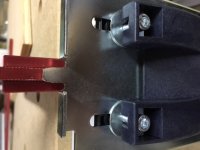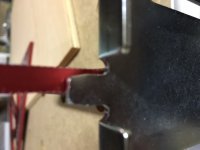Svar said:
I think in replies people keep misinterpreting the OP. He is talking about sloppiness and lack of repeatability of positioning rail support relative to the table, NOT the guide rail relative to support.
Correct. Therefore, I carefully used "guide rail" and "guide post" explicitly while I was describing but...

The tab which goes into the guide rail is engaging the grove under the guide rail really nice, as a matter of fact. No side to side to require any gizmos to further prevent relative motion in between the support and the rail. It is just fine. As it wears of, as someone suggested, just positioned hte rail few millimeters in either direction.
Shane Holland said:
FYI... We have the Slop Stop.
The issue that I am raising can not be addressed by the slopstop.
jamanjeval said:
I've noticed this too.
The MFT seems to hold its setup pretty well once set for a cut, but it isn't the kind of precision tool that I would trust to adjust accurately and repeatably. It just isn't that kind of tool.
For the same material thickness, during the same session of cutting, I expect to be reliable and repeatable but it is not the case when you have to make changes or remove the supports and "slap it back" to where you were, as it was advertised
waho6o9 said:
Exactly why I use rail dogs

Meaning the MFT/3 cannot do what it was designed and sold for as it is marketed.
Here is what I did to further understand. I took the supports apart after calling the Festool CS to be told it is what it is and I have the option to return it.
The sliding metal support is wider than the plastic frame. When the bolts tightened to a point that it should pull the metal support to the face of the plastic frame, it would be expected to see they mate well and there is not lateral translation/rotation. It does pull the two surface together but since the sloping edges are flaring out too much, the edges don't mate well. Placed the metal support in my bench vise and tightened ever slightly. Repeated till I got a "snug" fit allowing to slide the support freely. Now, I can slide it up and down and get nearly no lateral sloppiness. I will do the same with the rear support as well.
Note: When I spoke with the Festool CS, suggested that this could be easily addressed if some to check the shaping stamp mold for the support piece to create the channel like shape. He said he would pass it on. I think the stamping mold is made about at least 1-2mm too wide. My two cents, just in case if anyone is reading.



